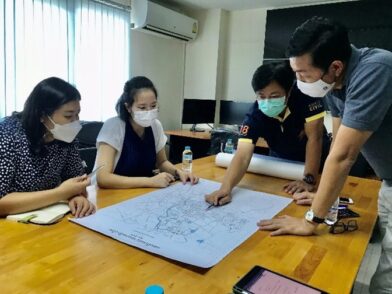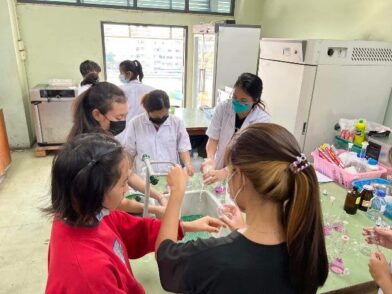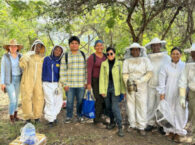The Water Quality Monitoring of Chiang Mai City Moat: The Proposed Solution for Sustainable Development
Metrics
Community
Chiang Mai Municipality, ThailandUniversity
Chiang Mai Rajabhat UniversityProgram
Department of Environmental Science and TechnologyYears
2021Status
ConfirmedCase Type
Partnership StoriesFocus Areas
Environmental Sustainability, SustainabilityRegion
Asia, Global, ThailandChiang Mai is the largest city in northern Thailand and the capital of Chiang Mai Province. The city’s location on the Ping River and its proximity to major trading routes contributed to its historical importance as the capital of the Lanna Kingdom. Chiang Mai was founded in CE 1296 and was built as a walled city surrounded by a moat. Today, according to the city plan, the area inside and around the rectangular moat is the main center of Chaing Mai City.

Typically, the water circulation around the moat depends on the periodical water release from Chiang Mai Irrigation Department. The frequency and the amount of water released to the moat are closely monitored; the water quality in the moat, however, is not. Overall, the water quality in Chiang Mai City Moat falls into categories 3 to 4 (moderate to polluted), meaning the water is generally unfit and unsafe for people to use. The contaminated water creates a negative image for the city. It also can lead to poor public health and encourage the spread of water-borne diseases.
With the pressure to improve the water quality and make Chiang Mai a more sustainable city, following Sustainable Development Agenda (particularly SDG 6 and SDG 11), the city urgently needs experts from the academic sectors, particularly environmental scientists and environmental chemists, to help improve the water quality in the moat. With facilities like qualitative laboratories, experts can help detect pollution indicators and manage them accordingly. For many years algae in the water posed a complicated problem to Chiang Mai Municipality.
Collaboration with Chiang Mai Rajabhat University (CMRU)
The Municipality realizes the expertise exists in the Chiang Mai Rajabhat University (CMRU), a local university in Chiang Mai City, to tackle several environmental issues. It has reached out to the CMRU for support and received positive feedback.

Three courses that were involved in this EPIC project include:
- Environmental Quality Monitoring
- Water Quality Analysis
- Health Behavior and Behavioral Safety

The staff from Chiang Mai Municipality met with the Chiang Mai Rajabhat University lecturers to plan and discuss strategies to solve water problems. Following the planning phase, the project kicked off in October 2021 through training and other essential preparation. Then, in November 2021, students from the Environmental Quality Monitoring class led by their lecturers collected water samples from four corners (Huai Rin, Sri Phum, Ku Rueang, and Katam) of the moat. At the same time, students from Health Behavior and Behavioral Safety conducted site observation and analyzed the behavioral safety along the streets, the bridges, and the surrounding collection points.
The collected samples were passed to the Water Quality Analysis class, where students analyze water quality and test for pollution indicators, including:
- Suspended Solid (SS)
- Dissolved Oxygen Demand (DO)
- Biochemical Oxygen Demand (BOD)
- Total Nitrogen (TN)
- Total Phosphorus (TP)
The frequency of water sampling and water analysis was monthly from November 2021 to February 2022.

Towards the end of the project, the students presented the analytical results to the municipality. Discussions between the lecturers, students, and municipality staff were held to discuss the findings and propose pragmatic solutions. The municipality took the recommendations to improve its water management. Indeed, the irrigation department releases fresh water to the moat to dilute low-quality water in the process known as “dilution.”

The municipality also gained crucial insights from the students that the people living along the waterways also contributed to the pollution in the moat. It is also vital for the municipality to pay attention to the communities in the city, ensuring that domestic wastewater is adequately treated, using grease and oil traps or filtration tanks before it is released into the waterways.

Outputs and Outcomes
This collaboration provides a great example to showcase the strength of the EPIC Model. The students and staff acquire the opportunities to practice their academic knowledge and skills in the actual situation. Undoubtedly, working directly on the real situation in their community allows the students to build awareness of the importance of addressing environmental problems. As for the municipality, the staff can obtain scientific data, recommendations on techniques to solve water problems, and insights on tackling water pollution more sustainably and inclusively.
Partnership Contact Information
City of Chiang Mai Contact
Mr. Trinnawat Suwanprik
Sanitary Researcher
Chiang Mai Municipality
cmsutp@gmail.com


